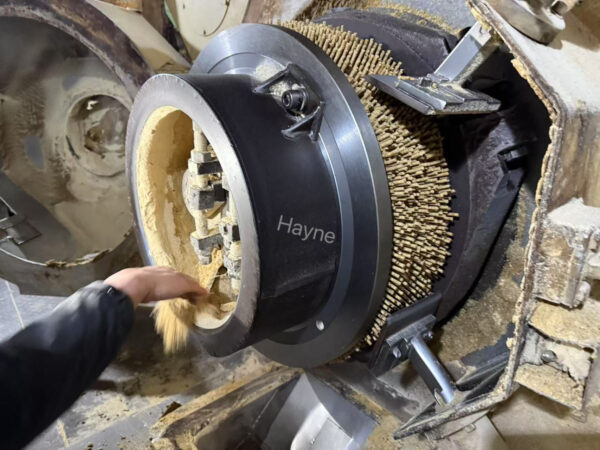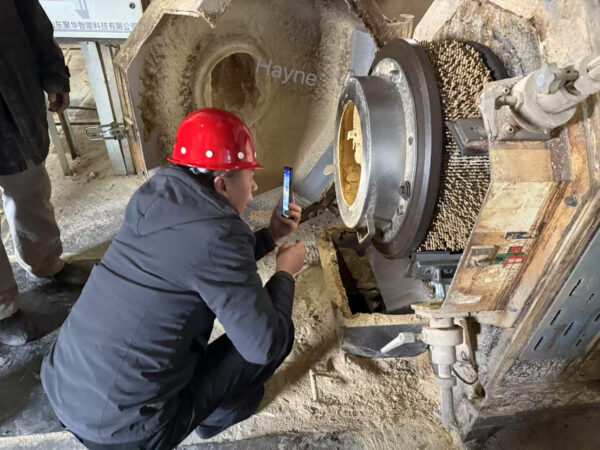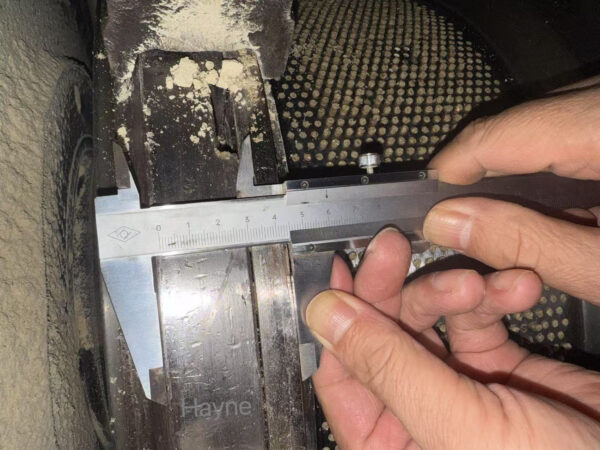I used to think that ring die issues were rare—until a client lost half a day's production because of an undetected crack. That experience changed my mindset forever.
Ring die inspection and maintenance involve daily visual checks, weekly advanced tests, and regular troubleshooting. These practices help prevent downtime, ensure consistent pellet quality, and reduce long-term costs.
Let me share what I’ve learned over the years, both from our factory and from customers across Europe and Southeast Asia. These insights can help you avoid costly breakdowns.
How to perform a daily ring die inspection?
One of my clients from Vietnam (Famous feed brand) said:"Daily checks help me spot small issues before they become big problems. Every day, I check for cracks, burrs, wear, and ensure the roller-die clearance is correct. I also remove any blockages that could affect production."

Daily Ring Die Inspection Checklist
| Inspection Item | Tools Needed | Acceptable Standard |
|---|---|---|
| Surface cracks, peeling | Flashlight | No visible damage |
| Die holes (burrs, blockages) | Needle, magnifier | Smooth surface, no blockage |
| Roller-die clearance | Thickness gauge | 0.1–0.3 mm |
| Die hole blockage | Compressed air | Fully cleared |
| Bolt fastening | Wrench | All bolts tight, no looseness |
| Noise/vibration | Listening stick | No abnormal noise or excessive vibration |
What tests should perform during weekly or shutdown maintenance?
Weekly checks dig deeper and prevent hidden problems.
Clients always use magnetic particle or ultrasonic testing to detect cracks, measure die hole wear, and verify surface hardness for long-lasting performance.

Weekly and Shutdown Maintenance
My Story: A Die That Looked Fine, But Wasn't
One of our clients in Eastern Europe had a die that looked perfectly fine from the outside. But after an ultrasonic test, we found internal cracks that could have caused a catastrophic failure. That taught me the value of proper testing—never skip it.
Weekly Inspection Table
| Inspection Item | Tools Needed | Target Standard |
|---|---|---|
| Surface/internal cracks | Magnetic particle/ultrasonic tester | No cracks detected |
| Die hole wall thickness | Hole gauge | Wear ≤ 20% of original thickness |
| Roller wear and damage | Visual and touch inspection | No cracks, no dents, no excessive wear |
| Surface hardness | Rockwell hardness tester | 52–54 HRC |
| Contact uniformity | Visual observation during operation | Even wear pattern |
What are the most common ring die problems and how to fix them?
Problems happen—but if we understand the cause, we can prevent them.
Typical issues like missing chunks, burrs, or vibration often come from poor materials, stress concentration, or improper maintenance. The right fixes prevent downtime.

Common Problems and Solutions
My Story: Learning from Mistakes
When I first started, I underestimated the impact of material fatigue on ring dies. A customer lost production because of a missing chunk at the die hole edge. After that, we optimize heat treatment and material selection—and we reduced similar failures by 60%.
Troubleshooting Table
| Problem | Likely Causes | Solutions |
|---|---|---|
| Missing chunk at die hole edge | Material fatigue, uneven heat treatment | Use better materials, optimize heat treatment, deburr holes, request rolling reinforcement |
| Burrs or blockage in die holes | Material residue, poor cleaning | Clean with compressed air, regular preventive maintenance |
| Uneven roller-die contact | Misalignment, uneven wear | Adjust roller clearance, inspect wear pattern, realign as needed |
| Abnormal vibration during use | Loose bolts, cracked die, damaged roller | Tighten bolts, inspect components, replace if necessary |
What tools do we need for proper ring die inspection?
Good tools make inspections easier and faster.
Our service team always use a flashlight, thickness gauge, flaw detectors, hardness tester, hole gauge, and compressed air for accurate and thorough inspections.

Essential Inspection Toolkit
| Tool | Purpose |
|---|---|
| Flashlight | Surface inspection for cracks and wear |
| Thickness gauge | Measure roller-die clearance |
| Magnetic particle flaw detector | Detect surface cracks |
| Ultrasonic flaw detector | Check internal cracks |
| Rockwell hardness tester | Verify surface hardness (52–54 HRC) |
| Hole gauge | Measure die hole wear and deformation |
| Compressed air cleaner | Remove die hole blockages |
Conclusion: Why Never Skip Ring Die Maintenance
Every day on the job, I see how small problems can lead to big breakdowns. My experience working with clients in Europe and Southeast Asia taught me that preventive maintenance is the key. By checking ring dies daily, performing weekly tests, and using the right tools, which can avoid costly downtime and keep pellet mills running smoothly. If you want to get the most out of your ring die, make maintenance a habit, not an afterthought.
At Hayne, we don't just supply dies and roller shells — our experience serving over 200 clients has taught us how to provide the right guidance for you. If you need free assistance, feel free to contact us at: china@haynegroup.com.

